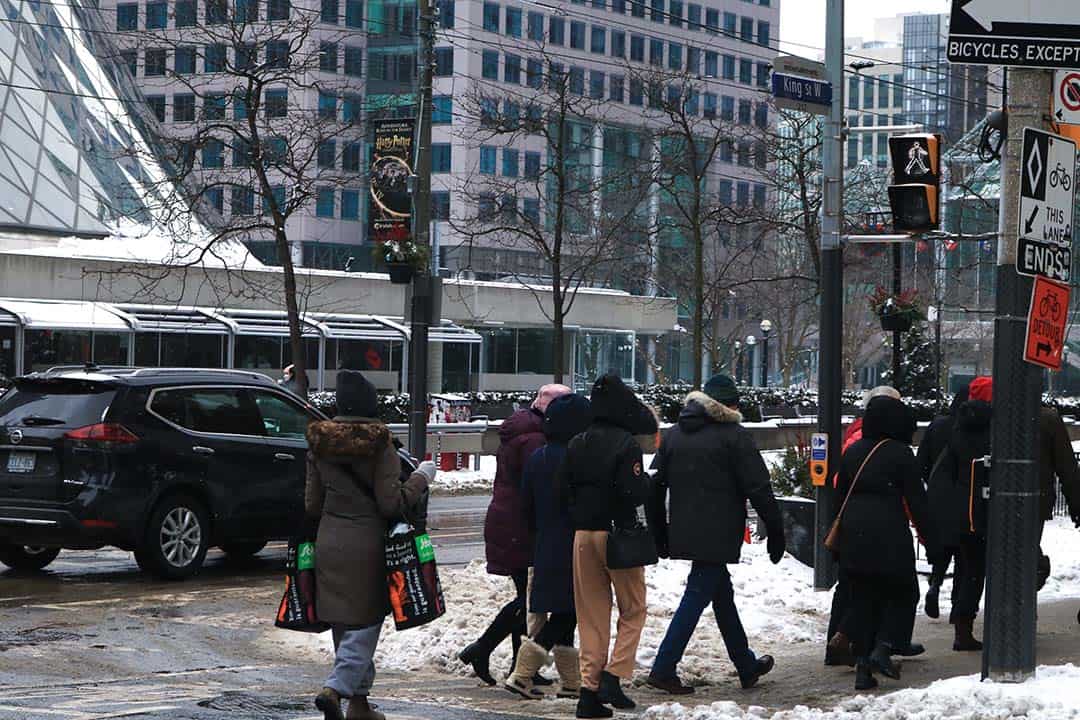Walking is an essential part of everyday life. As students, we walk between the different parts of our campuses. As commuters, we walk to catch GO trains and TTC buses regularly. The hustle and bustle of Toronto make the city a staple when considering walkable cities in Canada.
Right foot forward
Walkable cities are exactly what they sound like — cities where you can travel from one place to another with leg power. Walkability is a measure of how easy it is to commute in cities and towns.
Many health benefits go along with walkable cities. Researchers exploring walkable cities have shown correlations between walking and reduced obesity rates and chronic diabetes, especially since walking can burn approximately four calories a minute. Walkable areas also improve mental health, as walking has been proven to increase endorphin levels, lower stress-related cortisol, and even provide better sleep. There’s a reason you see elders doing laps in malls: these spaces provide an accessible way to maintain health. Physical activity doesn’t have to mean a commitment to a gym — it can be a simple walk from your house to your grocery store.
The economic benefits of walkability also make it desirable for businesses. Housing value increases in more walkable areas. Home buyers want neighborhood communities to have access to necessities like schools, transportation, and storefronts. They also offer business alternatives, as places like Atlanta and Silicon Valley have shown how an over dependence on motor vehicles can disrupt economic development.
Walkability also attracts tourists and can even let cities advertise a “lifestyle” retail market catered to walkers. Communities thrive on interaction, and walkable cities promote this. Having similar paths and destinations allows for common ground in meeting new people.
Plus, the benefits of walkable cities go beyond physical and emotional human needs and even impact our planet at large. Canada emitted a total of 672 megatonnes of greenhouse gases in 2020. While this figure does represent a decline of 9.3 per cent from 2005, Canada still has a long way to go to decrease its carbon footprint.
Two steps back
When you consider Toronto’s walkability, the city seems to be doing something right. Walk Score, a website designed to rate cities on their walkability, gave Toronto a 61 out of 100 overall. The problem is this score only applies to the City of Toronto — not the GTA.
My hometown, Ajax, is small, and getting anywhere takes forever without a car. Ajax is a suburban town with not much around unless you happen to live near Westney Plaza. There are bus routes and some bike lanes, but public transit can never be as extensive as Toronto. This problem becomes even more apparent when you look at places on the outskirts of Ontario, where proximity to amenities becomes much more of an issue.
As a commuter, I find the whole process of getting to campus to be annoying at times. I go to UTSC every day. I start my journey with a 15–20 minute walk from my house to the bus stop, wait another 10 minutes — approximately, depending on how early I get there — and ride for another half an hour until I get to campus. And while the public transit system works, it doesn’t allow me to travel to specific locations. For example, if I want to go to Centennial College in East York, it’ll take me two hours because our transit system isn’t a vast network.
Walkable cities have always been in demand because of this. Why would someone live in an isolated area when having necessities nearby can make things easier?
Keep walking
As Canada continues to evolve, so should our efforts in expanding the walkability of our city. As we continue to expand Toronto, we must also look to areas beyond the City to increase accessibility. While the infrastructure of walkable cities might be hard to develop in less dense areas, there are other ways to make public transit accessible. Vancouver, for example, has a transit system that offers monthly passes from various scales of transit across the city, which is one network divided into multiple ‘zones,’ rather than the mix of transit systems commuters have to transition through in the GTA to travel across multiple regions.
For now, the conveniences of walkable cities show how important they’ll be for the evolution of a green planet. They promote not only better health, but increase businesses and support stronger communities. While the GTA isn’t the most walkable, it is still moving in the right direction. Until then, we’ll keep running through the 6ix with our woes.


